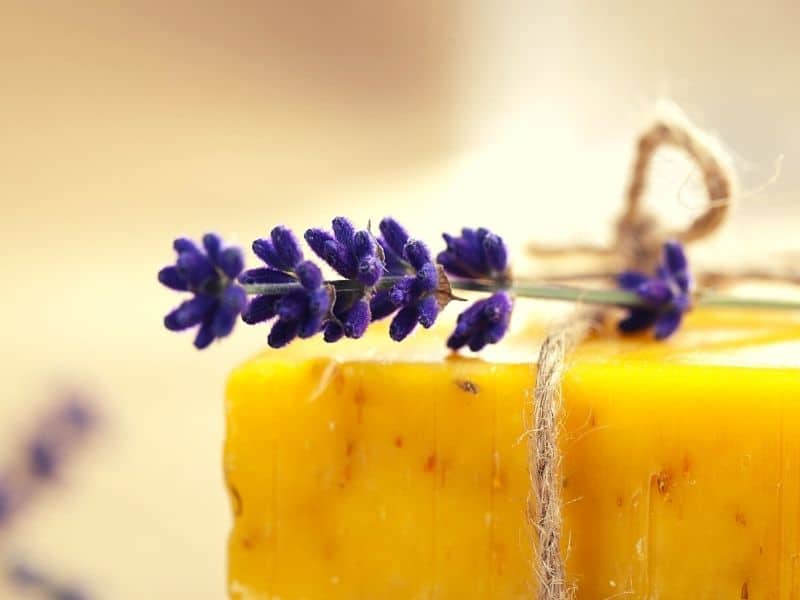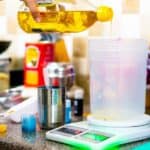When entering a new industry or a new hobby you will often come across some new terminology or words you haven’t seen before. This is also true when it comes to soap making. So, what does INS mean in soap making?
INS is a combination of the iodine and SAP values. It is a number that can be used to describe the physical characteristics of soap. The ideal INS value is 160 and the higher the number the harder the soap will be.
There are a few reasons why the INS number is important to soap makers. The first reason is that it can help you determine how well your soap is saponifying. If the number is too low, it could mean that your soap isn’t curing properly and could lead to problems like soft bars or even soap that doesn’t lather.
We will take a closer look at this process, but first, let’s learn some words.
INS and Soap Making Terminology
Saponification – The process of turning fat or oil into soap.
Iodine Value – A measure of the unsaturation in a fat or oil. The higher the iodine value, the more unsaturated the fat or oil is.
SAP – Short for saponification value. This is number indicates the amount of lye that will be needed to begin the saponification process.
INS – The iodine and SAP numbers combined. This number is used to describe the physical characteristics of soap.
Trace – The point in the soap-making process at which the saponification process begins and the soap starts to thicken.
Now that we have some of the terminologies down, let’s take a closer look at how it all goes together.
Why is The INS Number Important For Soap Making
The INS number is important because it can help you determine how well your soap is saponifying. If the number is too low, it could mean that your soap isn’t curing properly and could lead to problems like soft bars or even soap that doesn’t lather. On the other hand, if the number is too high, it could mean that your soap is too hard and could be difficult to use.
The saponification process is how we turn fat or oil into soap. We measure the iodine value of the fat or oil to see how much unsaturation is present. From there, we can calculate the SAP number which tells us how much lye will be needed to start the saponification process. We then combine the iodine and SAP numbers to get the INS number. This number tells us the physical characteristics of our soap.
Knowing the INS number can help you troubleshoot problems with your soap making process. If the number is too low, it could mean that your soap isn’t curing properly. On the other hand, if the number is too high, it could mean that your soap is too hard. By using this information, you can make adjustments to your recipe to help ensure that your soap turns out the way you want it to.
Why is Iodine Important For Soap Making
The iodine value is used to measure the unsaturation in a fat or oil. The higher the iodine value, the more unsaturated the fat or oil is. This is important because it helps to determine how well your soap is saponifying. What if the iodine number is too low?
If the iodine value is too low, it could mean that your soap isn’t curing properly and could lead to problems like soft bars or even soap that doesn’t lather.
However, this number can cause problems the other direction if the number is too high. What if the iodine number is too high?
If the iodine number is too high, it could mean that your soap is harder than it should be. The bar may be too hard to use. It might also be difficult to cut the soap into bars and you may find that they don’t last as long as they should.
The iodine number is an important part of soap making. It can help you determine how well your soap is saponifying and whether or not it is curing properly.
Calculating The INS Number For Soap
Now that we know what the iodine number is and why it is important, let’s learn how to calculate the INS number for soap. How do you calculate the INS number for soap?
The INS number is calculated by subtracting the Iodine number from the Saponification value. The ideal INS number is approximately 160 or somewhere between 137 and 170.
However, this number can also be misleading. As with a lot of things, this includes a little bit of “it depends”. You can have a perfect INS number and still not have a perfect bar of soap. It depends on a variety of other factors that can’t be included in a single number.
INS Tips
Here are some quick tips related to INS
- A lower iodine number generally means that the soap is more unsaturated and will be softer.
- A higher iodine number generally means that the soap is less unsaturated and will be harder.
- We measure the iodine value of the fat or oil to see how much unsaturation is present.
- The INS number tells us the physical characteristics of our soap.
Frequently Asked Questions
The iodine number is used to measure the unsaturation in a fat or oil. The higher the iodine value, the more unsaturated the fat or oil is.
The saponification number is used to calculate how much lye will be needed to start the saponification process.
The INS number is calculated by subtracting the Iodine number from the Saponification value. The ideal INS number is approximately 160 or somewhere between 137 and 170.
To calculate the iodine value for soap, you need to subtract the iodine number from the saponification number.
A low iodine number means that the soap is more unsaturated and will be softer. A high iodine number means that the soap is less unsaturated and will be harder.
The iodine number is important for soap making because it helps to determine how well your soap is saponifying. If the iodine number is too low, it could mean that your soap isn’t curing properly and could lead to problems like soft bars or even soap that doesn’t lather. If the iodine number is too high, it could mean that your soap is too hard.
Conclusion
In conclusion, the INS number can be important but it is not absolute. It is one factor to consider when making soap, but many other things also play a role in the final product.
Soapmaking is an art, not a science, and it takes practice to get it just right. Well… It is also a science, but it’s complicated.






